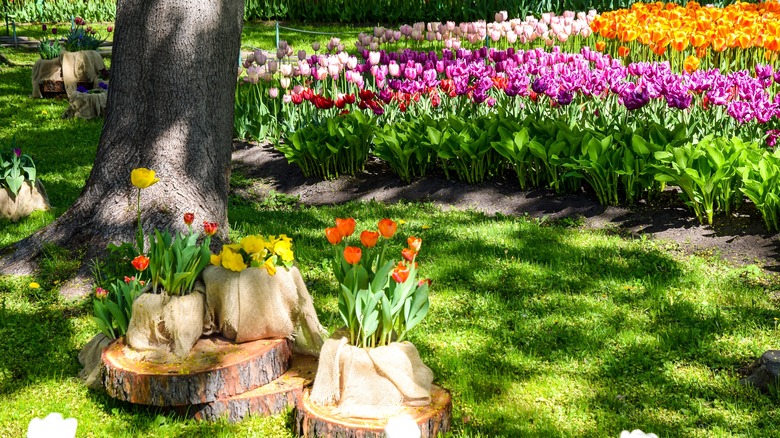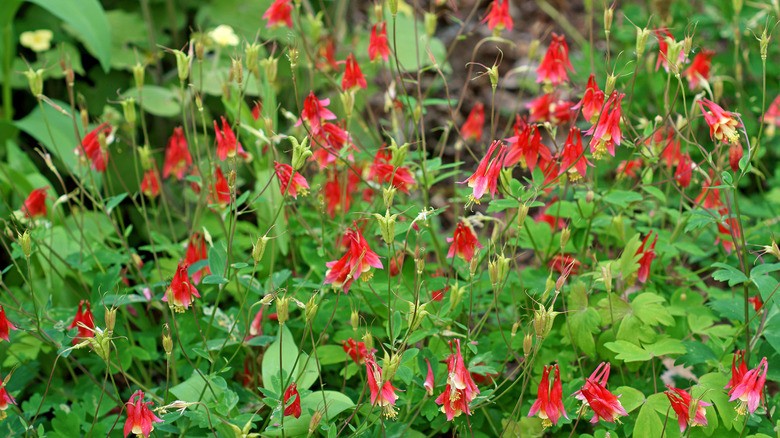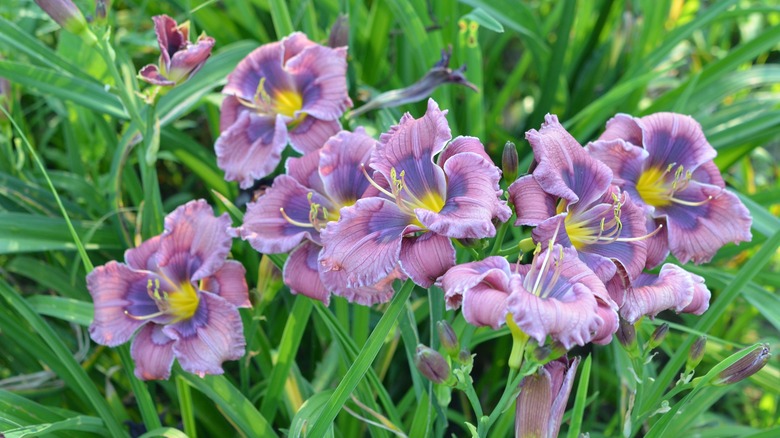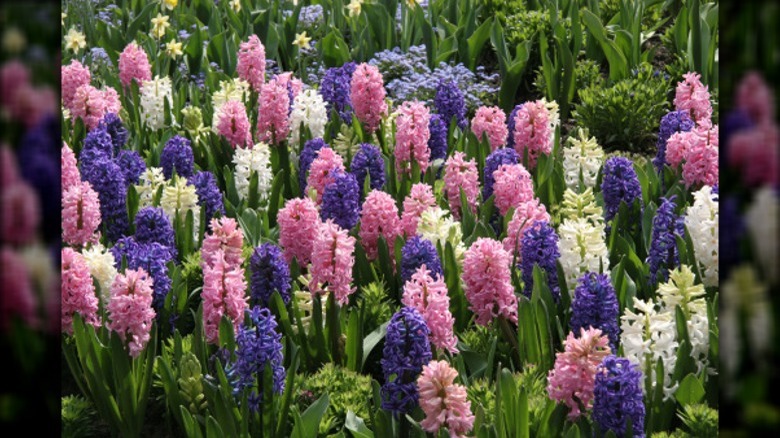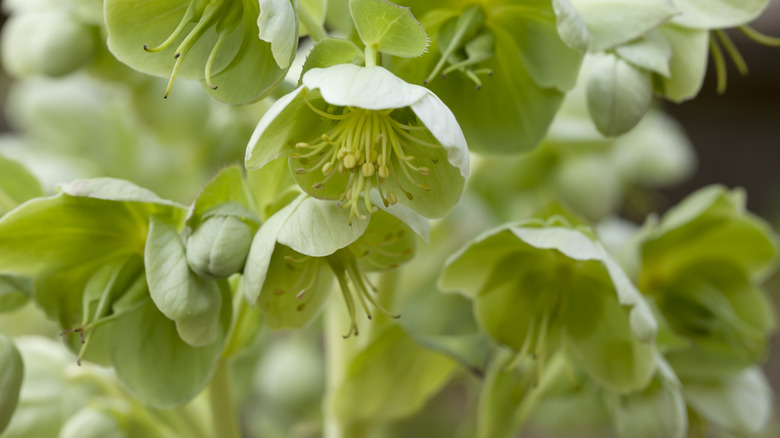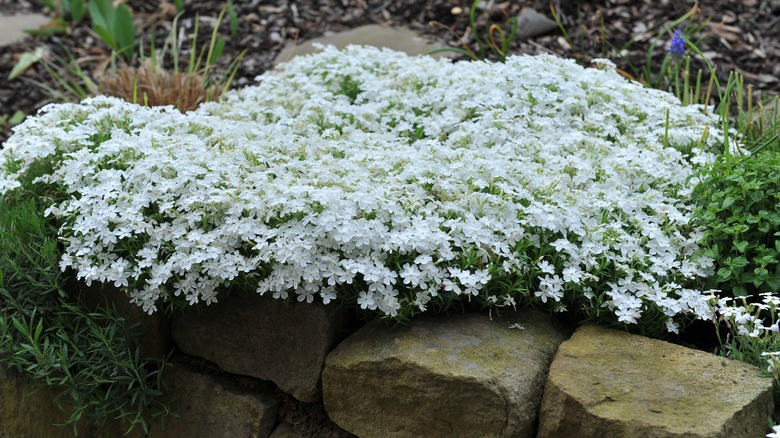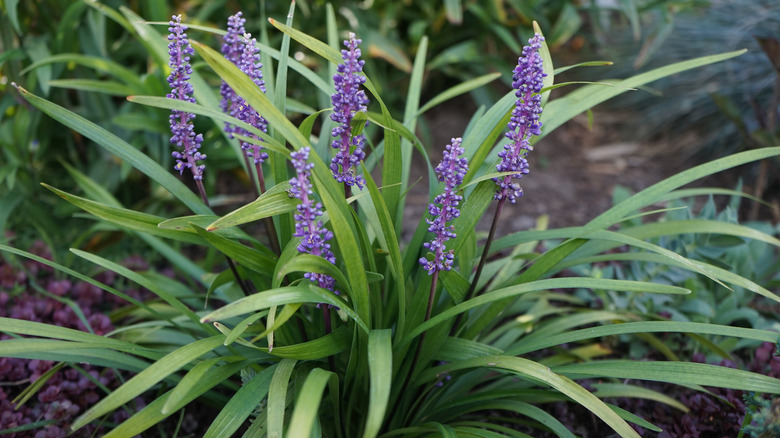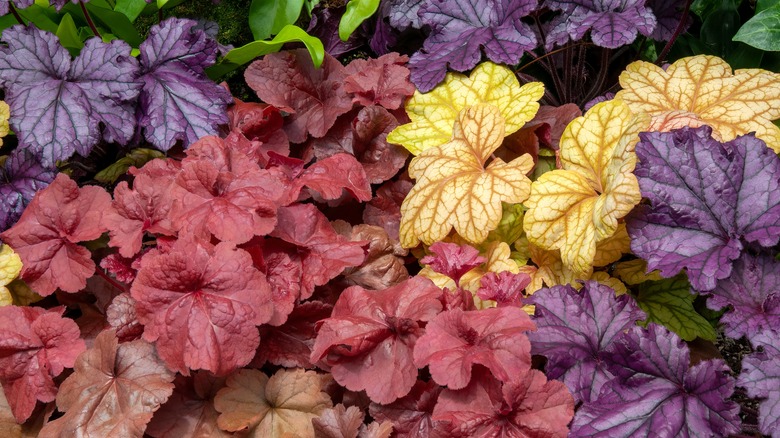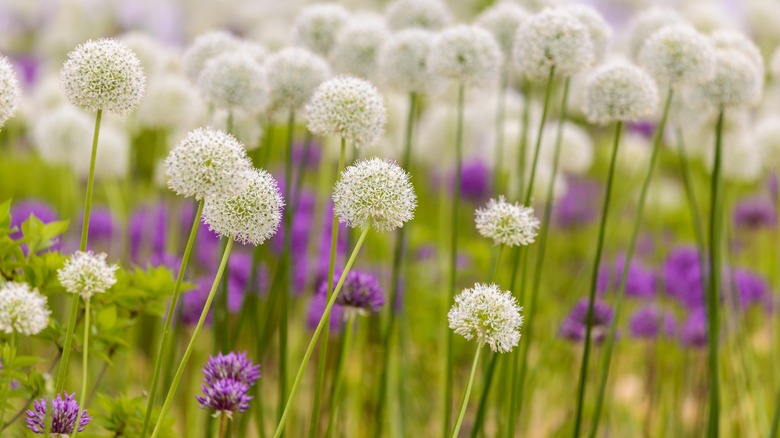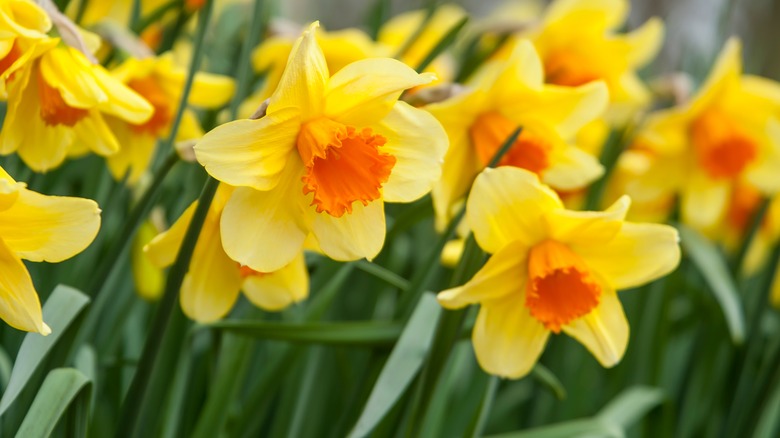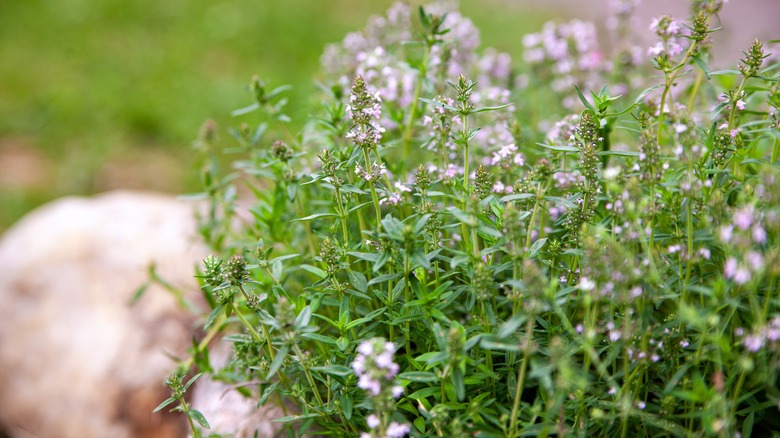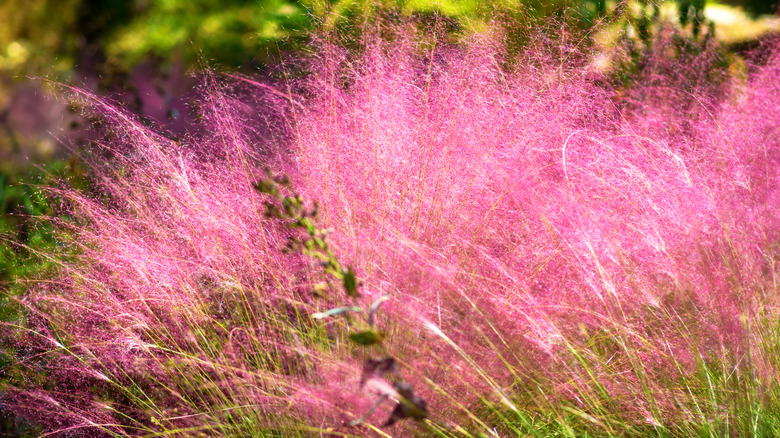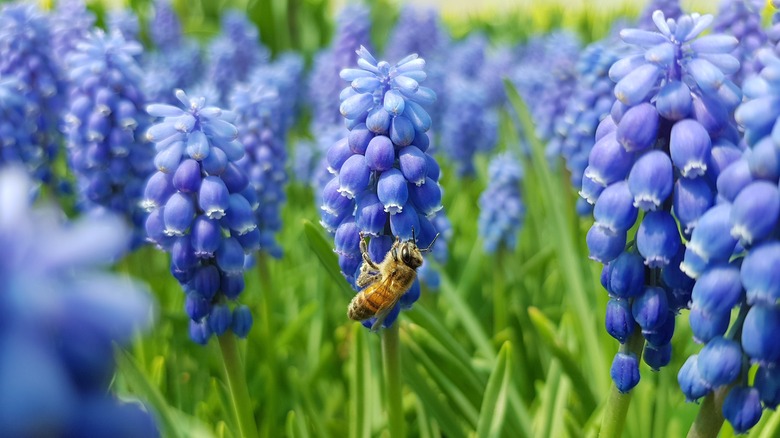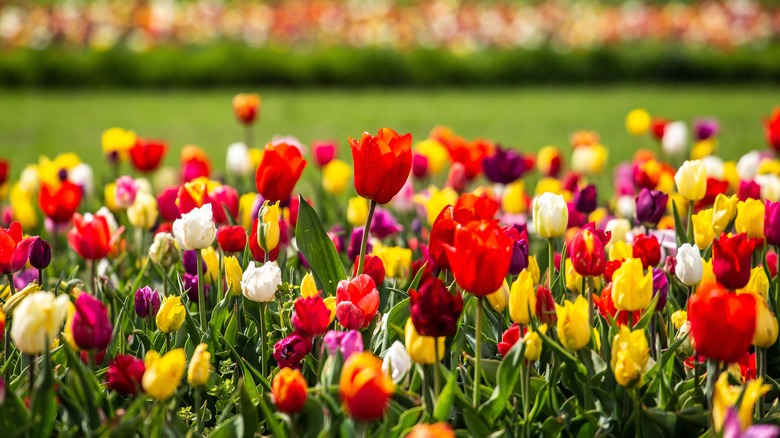Companion Plants That Will Live Well With Colorful Tulips In The Garden
We love tulips for many reasons. They are some of the first blooms to emerge after a long winter, and these gorgeous flowers come in a vast number of colors, from white to almost black. They even have some fascinating shapes beyond the classic style. The lady tulip (Tulipa clusiana) opens wide to make a gorgeous star shape, while the family of parrot tulips offers frilly petals in nearly every color of the rainbow. Since these beautiful blooms are so versatile, they work well with a number of companion plants.
While they are stunning, tulips are also short-lived. The blooms only last about two weeks outdoors, but the greens must be left until they die back so the bulbs can store energy for next year's blooms. As you make a plan for the landscaping around your tulips, consider adding plants that bloom at the same time as well as varieties that will hide the unsightly top growth as it dies back for the season.
Columbine
Columbine is an early bloomer whose full greenery and uniquely-shaped blooms make a lovely companion to tulips. The contrast between the sleek lines of tulip foliage and the bush-like growth habit of columbine make an interesting combination. There are about 100 varieties of these flowers, among the most common of which is the eastern red columbine. Not only is this cultivar beautiful, but it is also a favorite of migrating hummingbirds, offering the vital nectar they need to continue their journey north.
Daylilies
Available in many colors and sizes, the foliage of daylilies start to emerge around the same time that tulip leaves are becoming unsightly. Planting a row of daylilies in front of your tulip bulbs creates a visual barrier that hides the fading tulips while providing beautiful summer blooms. For even more visual interest, plant a row of taller daylilies behind a shorter cultivar.
Hyacinth
Hyacinths are bulbs that bloom around the same time as early tulip varieties. They tend to be a little shorter and make a nice companion plant because they add even more color and texture to your landscape during those precious early spring weeks. If you do choose to grow hyacinths, you might want to plant more than you actually need in your flower bed. Once you smell them, it's almost impossible not to bring them in as cut flowers to enjoy their aroma during the bloom's short lifespan.
Hellebore
Also known as a Lenten rose, hellebores are some of the first perennials to bloom in late winter. If you want to start your blooming season early, consider adding hellebores around your tulip bulbs. As you wait for the foliage and buds of tulips to emerge, you can enjoy the unique shape of this herbaceous plant, which also provides nectar for early emerging beneficial insects.
Creeping phlox
Like creeping thyme, creeping phlox (Phlox subulata) is a ground cover that fills in any empty spots you have and then some. Unlike thyme, this plant puts on a show when it blooms! This is a wonderful companion plant for tulips because it also blooms in the spring, so your flowerbeds will be bursting with color. Creeping phlox is particularly gorgeous in raised beds or large planters because of the way it drips masses of blooms over any edge.
Liriope
You would be hard-pressed to find a more hardy and low-maintenance companion plant than liriope. This ornamental grass-like plant is often called monkey grass and comes in green and variegated varieties. Liriope makes an excellent border plant with lush leaves that hide fading flower foliage. It is drought-tolerant and darn near impossible to kill, but because this plant is so tough, some cultivars spread quickly.
Coral bells
Heucheras, also commonly known as coral bells, offer beautiful foliage in a broad range of colors from bright green to deep purple. These mounding perennials are low-maintenance plants that tolerate shade while offering tall spikes covered with clusters of blooms from spring to summer, depending on the variety. Place a border of coral bells in front of your tulips to hide their fading foliage.
Alliums
Ornamental alliums are members of the onion and garlic family. These fun bulbs grow up to 4 feet tall with round heads covered in clusters of tiny star-shaped flowers. Although there are some fall-blooming varieties, most bloom in the spring. When you are shopping for tulip and allium bulbs, look for cultivars of each that are expected to bloom at the same time in your region. This bulb combo makes a visually stunning arrangement in the garden and indoors as cut flowers.
Daffodils
Like alliums, daffodils complement tulips beautifully. Also available in different shapes and colors, late-blooming daffodils pair well with early-blooming tulips since they should make their display at the same time. Daffodil colors are not as vast as other bulbs, but white varieties pair well with any type of tulip, or you can purchase tulip colors that are complemented by orange and yellow.
Creeping thyme
This easy-to-grow herb is perfect for more than a kitchen garden. It is not bold or showy, but it does produce small blooms in the summer that bees and other native beneficial insects love. Growing thyme as a ground cover helps reduce the need for weeding and mulch while providing visual texture to the space. The tiny green leaves die back over the winter, allowing room for bulbs to poke through, although you may need occasionally remove some sections of the plant if your growth is very dense.
Muhly grass
The soft, frothy look of muhly grass adds an interesting texture to any landscape. Since this option grows up to 4 feet tall, it makes a lovely background plant in flower beds. Although it reaches its peak pink or purple color later in the year, this ornamental grass provides year-round interest in the garden when everything else is dormant.
Grape hyacinth
Grape hyacinths (Muscari armeniacum) are tiny bulbs whose flowers make a big impact when you plant many in a grouping. This option blooms around the same time as tulips and make a good companion by adding color and texture. Plant your grape hyacinths in front of your tulip bulbs for layers of flowers. These blooms only come in one color, purple, so plant them with complementary hues of tulips.
Early/Mid/Late blooming tulips
What is a better companion plant to tulips than other tulips? With over 3,000 varieties, there are options that bloom at different times. Even though these blooms only last a few weeks, you can extend your enjoyment of tulips by choosing different varieties that bloom at different times. With so many different colors, shapes, and blooming periods, you can make the most of the spring season in your flower beds.
